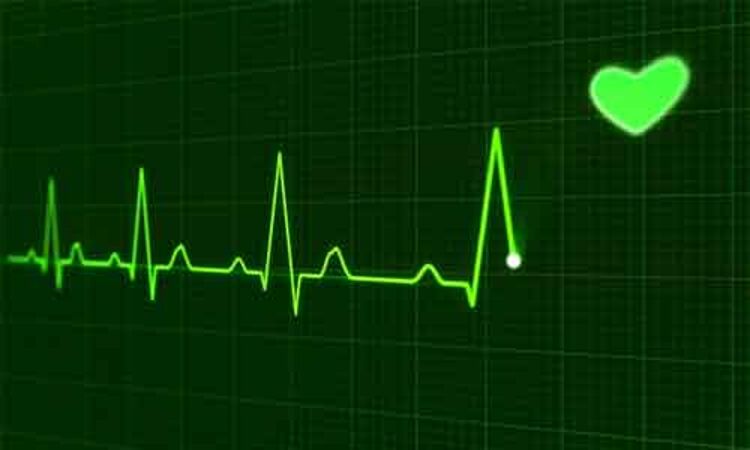- Home
- Medical news & Guidelines
- Anesthesiology
- Cardiology and CTVS
- Critical Care
- Dentistry
- Dermatology
- Diabetes and Endocrinology
- ENT
- Gastroenterology
- Medicine
- Nephrology
- Neurology
- Obstretics-Gynaecology
- Oncology
- Ophthalmology
- Orthopaedics
- Pediatrics-Neonatology
- Psychiatry
- Pulmonology
- Radiology
- Surgery
- Urology
- Laboratory Medicine
- Diet
- Nursing
- Paramedical
- Physiotherapy
- Health news
- Fact Check
- Bone Health Fact Check
- Brain Health Fact Check
- Cancer Related Fact Check
- Child Care Fact Check
- Dental and oral health fact check
- Diabetes and metabolic health fact check
- Diet and Nutrition Fact Check
- Eye and ENT Care Fact Check
- Fitness fact check
- Gut health fact check
- Heart health fact check
- Kidney health fact check
- Medical education fact check
- Men's health fact check
- Respiratory fact check
- Skin and hair care fact check
- Vaccine and Immunization fact check
- Women's health fact check
- AYUSH
- State News
- Andaman and Nicobar Islands
- Andhra Pradesh
- Arunachal Pradesh
- Assam
- Bihar
- Chandigarh
- Chattisgarh
- Dadra and Nagar Haveli
- Daman and Diu
- Delhi
- Goa
- Gujarat
- Haryana
- Himachal Pradesh
- Jammu & Kashmir
- Jharkhand
- Karnataka
- Kerala
- Ladakh
- Lakshadweep
- Madhya Pradesh
- Maharashtra
- Manipur
- Meghalaya
- Mizoram
- Nagaland
- Odisha
- Puducherry
- Punjab
- Rajasthan
- Sikkim
- Tamil Nadu
- Telangana
- Tripura
- Uttar Pradesh
- Uttrakhand
- West Bengal
- Medical Education
- Industry
Breath-holding for over 5 minutes a potential radiotherapy treatment for cardiac arrhythmias

UK: A technique that enables patients suffering from heart conditions to hold their breath safely for over 5 minutes could have potential as part of a new treatment for cardiac arrhythmias, say researchers at the University of Birmingham.
In a new study, published in Frontiers in Physiology, researchers initially proposed the technique as a new means for earlier diagnosis of ischaemic heart disease. The technique involves hyperventilating conscious, unmedicated patients using a mechanical ventilator which delivers air to the patient via a face mask.
Hyperventilation causes hypocapnia that leads to temporary constriction in the coronary arteries. The researchers were initially exploring whether this effect could be exploited as an 'early warning system' to diagnose coronary heart disease.
Although more work needs to be done on its diagnostic potential, the research was able to confirm that mechanical hyperventilation and hypocapnia were well-tolerated and safe for patients with angina.
The team believes this paves the way to induce breath-holds of over five minutes to support an emerging new technique in which radiotherapy, instead of radiofrequency or freezing, is used for cardiac ablation.
In this procedure, patients with arrhythmias undergo precisely targeted radiotherapy, applied from outside the chest, to destroy tissue that is allowing incorrect electrical signals to cause an abnormal heart rhythm. Breathing is a problem because each breath causes the heart to move within the chest.
Lead author Dr. Michael Parkes, of the University's School of Sport, Exercise and Rehabilitation Sciences, explained: "There is still little awareness of the simplicity, availability, and safety of non-invasive mechanical hyperventilation. We have already shown that patients with breast cancer can breath-hold safely for over 5 minutes using this technique. The fact that patients with angina were able to tolerate mechanical hyperventilation so well confirms its potential to improve the newly emerging procedure of using radiotherapy for cardiac ablation.
"Stopping breathing with a safe breath-hold of over 5 minutes, using mechanically induced hypocapnia and now with oxygen-enriched air, could allow surgeons to target the radiotherapy for cardiac ablation much more precisely. The advantage of radiotherapy over radiofrequency or freezing is that radiotherapy is completely non-invasive and is applied from outside the chest. Whereas the other techniques require a catheter, passed via a vein in the groin or artery in the neck, to be placed inside the atria in the heart. Currently, such radiotherapy is being considered only when all other ablations and pharmacological techniques have failed."
The next step is to test this technique in patients with cardiac arrhythmias to see if they too can hold their breath long enough to apply the radiotherapy.
For more details click on the link: http://dx.doi.org/10.3389/fphys.2019.01515
Hina Zahid Joined Medical Dialogue in 2017 with a passion to work as a Reporter. She coordinates with various national and international journals and association and covers all the stories related to Medical guidelines, Medical Journals, rare medical surgeries as well as all the updates in the medical field. Email: editorial@medicaldialogues.in. Contact no. 011-43720751
Dr Kamal Kant Kohli-MBBS, DTCD- a chest specialist with more than 30 years of practice and a flair for writing clinical articles, Dr Kamal Kant Kohli joined Medical Dialogues as a Chief Editor of Medical News. Besides writing articles, as an editor, he proofreads and verifies all the medical content published on Medical Dialogues including those coming from journals, studies,medical conferences,guidelines etc. Email: drkohli@medicaldialogues.in. Contact no. 011-43720751


